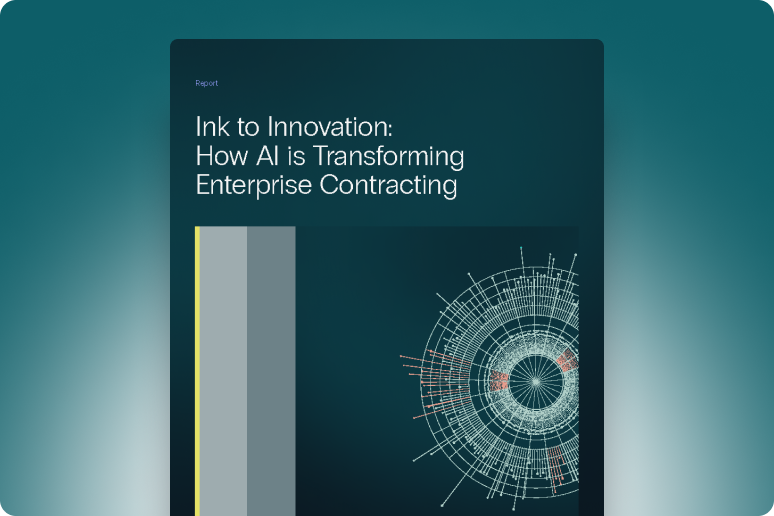How Generative AI for Contracts Improves Business Processes
Subscribe to our Newsletter
Webinar Overview
AI is shaking up enterprise contract management across all business functions. From procurement and legal to HR and finance, AI improves outcomes… when used properly. But there are still unknowns at play when it comes to AI’s risks and benefits.
This panel discussion—featuring leaders from Sirion, Spend Matters, and IBM—offers a behind-the-scenes look at the good, the bad, and the ugly of AI for CLM.

How Generative AI for Contracts Improves Business Processes
Speakers

Pierre Mitchell
Chief Research Officer & Managing Director Spend Matters

Madison Gooch
Director, Watson Applications & Solutions IBM

Sujay Rao
Chief Product Officer Sirion

Kanti Prabha (moderator)
Co-Founder & President Sirion
What We Learned About Generative AI for CLM
AI is everywhere. But, we need to master the data behind AI to create value in procurement and contracting. This requires outside intelligence to scale and augment with AI, all while monitoring risk and compliance.
Most of what is on the market today is traditional AI. Enter generative AI, which is creating so many more opportunities. When properly used, gen AI creates better outcomes based on automated intelligence around how to negotiate, spend planning, renewal planning, and deeper insights on the front end to get more value early on.
In this webinar, we dove deep into the innovative world of Contract Lifecycle Management (CLM) and the revolution brought about by generative AI. Read the highlights below or catch the full replay above.
How We Use LLMs Will Determine the Effectiveness of Generative AI
The CLM space is undergoing yet another transformation with the advent of generative AI. It’s important to understand how this differs from traditional AI, which predominantly focuses on data extraction. The new generative AI offers a broader range of potential applications, leveraging vast datasets.
A notable feature driving this change? Language. As language serves as a key driver, we need to understand LLMs (large language models) and the best ways to use them.
When it comes to contract management, business teams have often historically “set it and forget it” — but a contract can be a vital source of business insight when managed well.
Generative AI and its Data Models Have to Have Rules
Businesses and enterprises require different AI capabilities and data sets than what the general consumer needs. There are four core principles to tailor generative AI for the enterprise.
- Open – Utilizing open source and multiple models lets you innovate rapidly and ensures flexible deployment. But you shouldn’t neglect building your own models. Leveraging both is ideal for success.
- Targeted – Models must be outcome-oriented, not mere creative writing tools. You can do this by curating models tuned to proprietary data, company guidelines, and business use cases.
- Trusted – When built on curated data, look for an AI that ensures security, transparency, and meets regulatory requirements. Ensure whatever technology you use lets you keep your data and doesn’t use it to train other models.
- Empowering – Strive to craft scalable solutions and extract maximum value from your data using a hybrid and multi-cloud approach important for agility and scale. Look at the accuracy of the model you choose in tangent with governance, regulatory compliance, and ensuring the cost to implement is valuable.
Generative AI is Changing Contracts in the Following Ways:
1. By making contracting conversational – Chatbots are at the forefront of this change and allow users to do things like draft a standard NDA or ask direct questions about the contents of a contract – summarizing, understanding context, identifying risks (clause favorability or ambiguity), generating reports on the fly to get insights.
2. By making contracting zero-touch – Redlining a contractAI Contract Redline is a manual, time-consuming process involving multiple people. While human involvement and strategy will still exist in drafting contracts, you can use AI for contracts to set up auto-redlining processes to give you a head start.
AI will also help automate workflows by predicting and recommending the next steps, prompting users to take action, and auto-generating drafts for related documents. For example: AI monitors and senses an upcoming renewal date, generates a first draft of a new contract, and then automatically sends the draft to the first reviewer in your workflow.
3. By requiring a multi-model and multi-modal approach – A single LLM won’t cut it. Different LLMs are good at different things. So, depending on your use case, you may need one or more specific LLMs supported in your system to handle various tasks.
The Evolution of GenAI in the Enterprise isn’t Without its Challenges
Keep in mind:
- Ensuring data safety is paramount.
- Always build systems that are transparent and ethically constructed.
- Generative AI is expensive, but the benefits to the overall enterprise outweigh the software costs.
- Use multiple models to address different challenges and understand that no one size fits all.
This was only a glimpse into the power of generative AI for CLM. As we move forward, it’s evident that integrating AI into contract management is not just a passing trend but a necessity for getting the most business value out of your contracts. Connect with us 1-1 to learn more about how an AI CLM works for your organization.
Additional Resources
Subscribe to Our Newsletter



